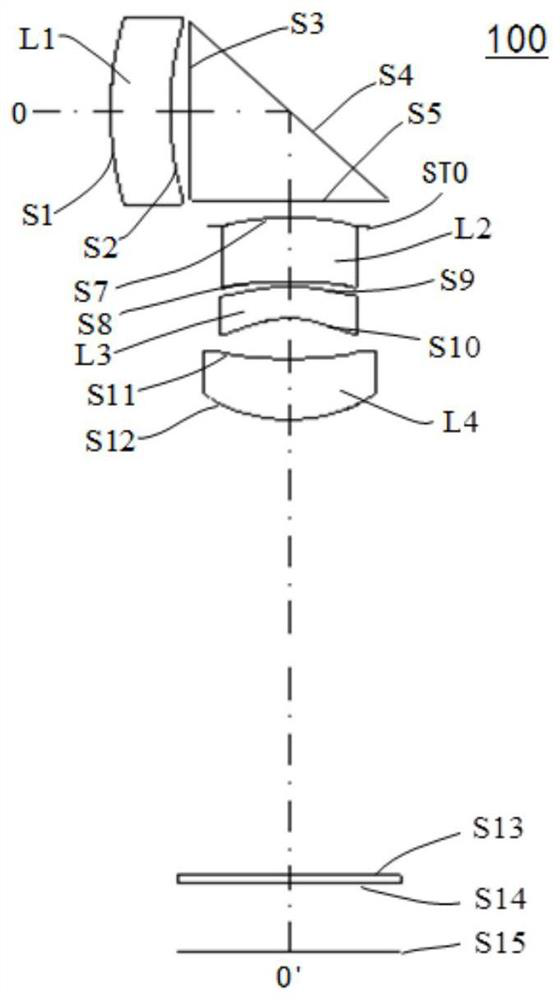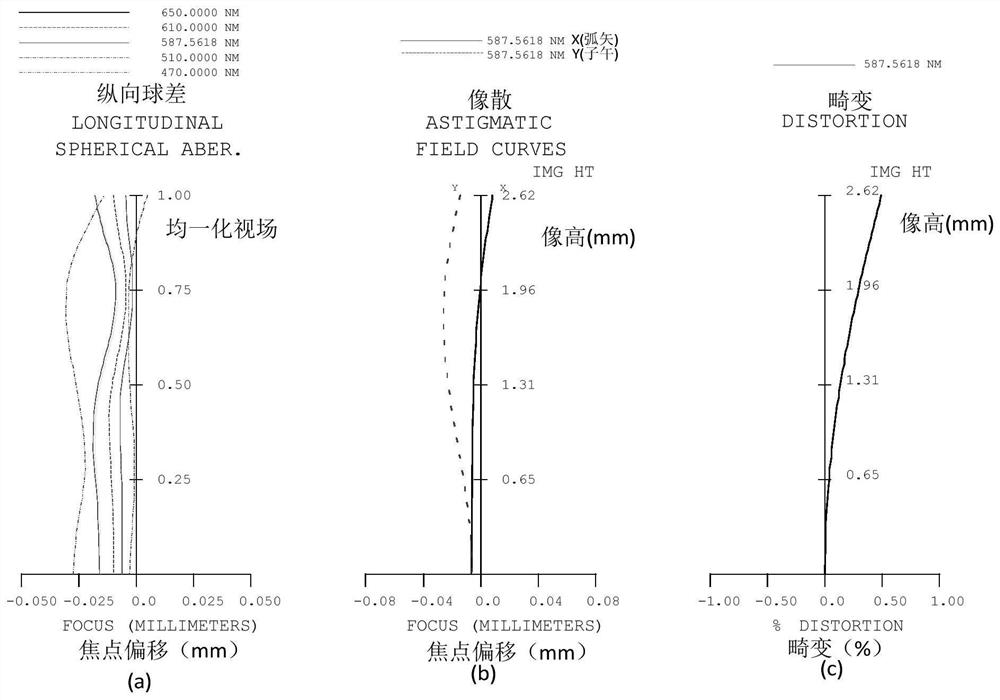Optical imaging system, module and electronic equipment
An optical imaging system and imaging surface technology, applied in optics, optical components, instruments, etc., can solve the problems of small light transmission and small field of view, and achieve the effects of high practicability, expanded field of view, and strong practicability
- Summary
- Abstract
- Description
- Claims
- Application Information
AI Technical Summary
Problems solved by technology
Method used
Image
Examples
Embodiment 1
[0069] see Figure 1-Figure 2 As shown, the optical imaging system 100 of this embodiment satisfies the conditions of Table 1 and Table 2 below.
[0070] Table 1
[0071]
[0072]
[0073] Wherein, EFL is the effective focal length of the optical imaging system 100, FNO is the aperture number of the optical imaging system 100, TTL21 is the distance from the object side of the first lens L1 to the reflective surface of the prism on the optical axis OO', and TTL22 is the center of the reflective surface of the prism The distance to the imaging surface S15 on the optical axis OO', ETL3 is the edge thickness of the effective aperture of the third lens L3, CTL3 is the thickness of the third lens L3 on the optical axis OO', RAD (AngleS1) is the maximum field of view point The radian value of the incident angle of the chief ray passing through the object side of the first lens L1, RAD(FOV) is the radian value of the maximum field of view angle of the optical imaging system 100, ...
Embodiment 2
[0088] see Figure 3-Figure 4 As shown, the optical imaging system 100 of this embodiment satisfies the conditions in Table 3 and Table 4 below.
[0089] table 3
[0090]
[0091] Wherein, EFL is the effective focal length of the optical imaging system 100, FNO is the aperture number of the optical imaging system 100, TTL21 is the distance from the object side of the first lens L1 to the reflective surface of the prism on the optical axis OO', and TTL22 is the center of the reflective surface of the prism The distance to the imaging surface S15 on the optical axis OO', ETL3 is the edge thickness of the effective aperture of the third lens L3, CTL3 is the thickness of the third lens L3 on the optical axis OO', RAD (AngleS1) is the maximum field of view point The radian value of the incident angle of the chief ray passing through the object side of the first lens L1, RAD(FOV) is the radian value of the maximum field of view angle of the optical imaging system 100, F1 is the ...
Embodiment 3
[0103] see Figure 5-Figure 6 As shown, the optical imaging system 100 of this embodiment satisfies the conditions in Table 5 and Table 6 below.
[0104] table 5
[0105]
[0106] Wherein, EFL is the effective focal length of the optical imaging system 100, FNO is the aperture number of the optical imaging system 100, TTL21 is the distance from the object side of the first lens L1 to the reflective surface of the prism on the optical axis OO', and TTL22 is the center of the reflective surface of the prism The distance to the imaging surface S15 on the optical axis OO', ETL3 is the edge thickness of the effective aperture of the third lens L3, CTL3 is the thickness of the third lens L3 on the optical axis OO', RAD (AngleS1) is the maximum field of view point The radian value of the incident angle of the chief ray passing through the object side of the first lens L1, RAD(FOV) is the radian value of the maximum field of view angle of the optical imaging system 100, F1 is the ...
PUM
 Login to View More
Login to View More Abstract
Description
Claims
Application Information
 Login to View More
Login to View More - R&D
- Intellectual Property
- Life Sciences
- Materials
- Tech Scout
- Unparalleled Data Quality
- Higher Quality Content
- 60% Fewer Hallucinations
Browse by: Latest US Patents, China's latest patents, Technical Efficacy Thesaurus, Application Domain, Technology Topic, Popular Technical Reports.
© 2025 PatSnap. All rights reserved.Legal|Privacy policy|Modern Slavery Act Transparency Statement|Sitemap|About US| Contact US: help@patsnap.com



